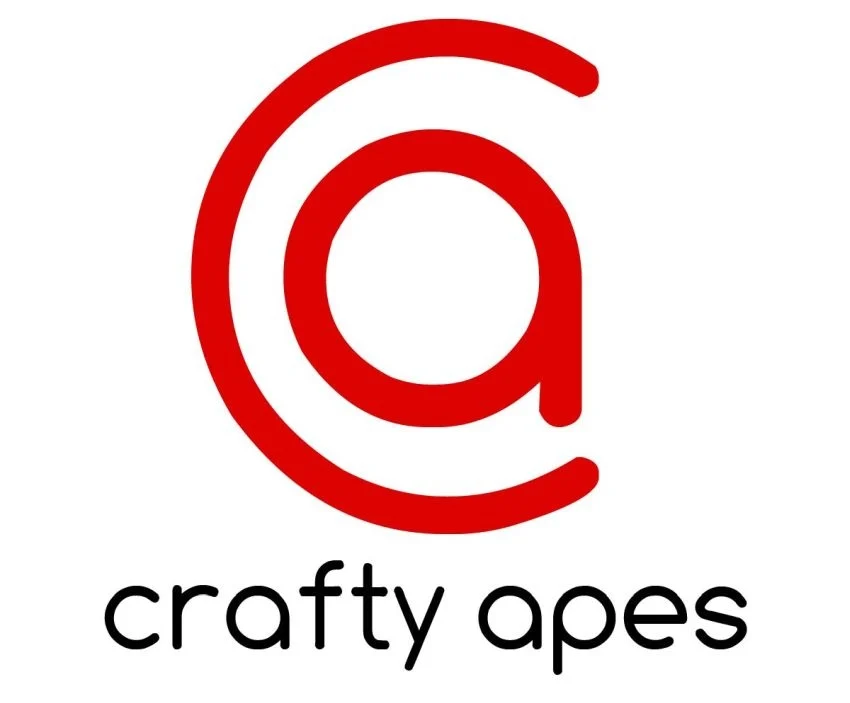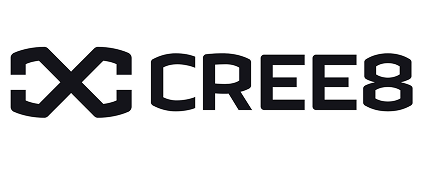The Business of Anime: A Guide for Executive Strategy

Introduction
The global anime industry has transcended its niche origins to become a mainstream cultural and commercial force. For senior executives in the media and entertainment sector, understanding the intricate business landscape of this market is no longer optional; it is a strategic imperative.
The industry, valued at over $25 billion, is projected to grow significantly in the coming years, driven by the insatiable demand from global streaming platforms and the expansive monetization of intellectual property (IP).
However, this growth masks a complex and often fragmented ecosystem. This guide provides a data-driven framework for navigating the business of anime, from its core production models to its strategic opportunities in international markets. It will cover the key challenges and present a methodology for identifying and engaging with the right partners, transforming a process often shrouded in opacity into a clear, strategic discipline.
Table of content
- Introduction
- Key-Takeaways
- The Global Anime Market: A Data-Driven Overview
- Deconstructing the Anime Production Model
- Key Strategic Challenges for M&E Executives
- IP Monetization Beyond the Screen: A Strategic View
- The Strategic Power of International Co-Productions
- How Vitrina Helps: Unlocking Strategic Intelligence in the Anime Supply Chain
- Conclusion
- FAQs
Key Takeaways
- The global anime market is experiencing significant growth, with projections reaching over $40 billion by 2035, driven by streaming and IP diversification.
- The “production committee” model is the core business structure, spreading risk but creating a fragmented ecosystem where the IP holder, not the animation studio, holds the most power.
- Key executive challenges include fragmented data, a lack of visibility into early-stage projects, and the difficulty of vetting credible international partners.
- Successful anime business strategy requires an “IP-centric” view, leveraging cross-platform monetization beyond the screen (merchandising, gaming, etc.) to maximize revenue.
- International co-productions are a powerful tool for scaling content and mitigating risk, but they demand a data-driven approach to partner selection and due diligence.
- A platform like Vitrina provides a single source of truth, offering a real-time project tracker, verified company profiles, and executive contacts to de-risk partnerships and enable proactive deal-making.
The Global Anime Market: A Data-Driven Overview
The business of anime is defined by its explosive global growth and diverse revenue streams. According to a 2024 report by Market Research Future, the anime market was valued at $26.52 billion and is projected to reach $40 billion by 2035, growing at a CAGR of 3.81%.
A separate report by Market.us estimates an even higher growth rate, forecasting the market to hit $74.8 billion by 2033 with a CAGR of 9.5%. This growth is not confined to Japan; the overseas market now significantly exceeds the domestic one in size, propelled by dedicated streaming services like Crunchyroll and global platforms such as Netflix and Amazon Prime Video.
The primary drivers are the proliferation of streaming platforms and the diversification of content beyond traditional genres. The key is understanding that this is not a monolithic industry but a complex ecosystem of content creators, distributors, and ancillary businesses. My analysis of this landscape shows that while the market is expanding, executives must look past the headline numbers to identify tangible, data-driven opportunities.
The market can be segmented by its primary revenue sources: merchandise, video content, music, live events, and gaming. Each of these segments operates with unique business models and requires specific strategic attention. The challenge is not a lack of interest, but a lack of transparency into who is creating what, who is funding it, and where the real value lies in the supply chain.
Deconstructing the Anime Production Model
Unlike the Hollywood studio system, the anime industry operates on a unique and often opaque model centered on “production committees.” These committees are consortiums of companies—including publishers, broadcasters, music labels, and toy companies—that pool funds to finance a project. The animation studio itself is typically a hired gun, receiving a fixed fee for its services.
This model disperses financial risk across multiple parties. However, it also means the animation studio, the primary creative engine, often receives only a small percentage of the total project revenue, even as the IP generates significant profits from merchandising, music, and home video sales. This financial structure is a core reason why many studios operate on thin margins, and it creates a strategic challenge for international executives seeking to form equitable partnerships. To engage effectively, you must first map the full production committee and understand who holds which rights.
The power lies with the IP holder, not always the studio. This committee system, while a product of the domestic market, has created a fragmented production landscape that can be difficult for international partners to penetrate. Understanding the roles of each committee member—from the manga publisher who holds the original rights to the music company that benefits from the soundtrack—is crucial for navigating this complex system and negotiating a fair and profitable deal. This structure is both a risk-mitigation strategy and a profit-sharing framework, and a failure to understand it can lead to misaligned expectations and lost opportunities.
Key Strategic Challenges for M&E Executives
In my work with over 2,200 entertainment firms, a few recurring challenges emerge when engaging with the anime market. The first is a lack of visibility. While there are thousands of anime projects in development, reliable, real-time information on project status, collaborators, and key personnel is fragmented. This makes it difficult to discover new projects early enough for a pre-buy or to identify co-production opportunities before the slate is locked.
The second challenge is finding credible partners. Vetting a studio, a distributor, or a localization vendor in a new market requires deep knowledge of their past work, collaborators, and financial stability. Traditional methods—relying on a single contact or attending a few trade shows—are no longer sufficient. You need a way to perform a comprehensive audit of a company’s track record. A third and equally important challenge is the sheer volume of data. The industry’s B2B metadata—from production credits to licensing agreements—is often siloed, forcing executives to piece together a strategic picture from disparate, and often outdated, sources. This lack of a single source of truth slows down deal-making and increases risk.
The manual process of building a list of potential partners, researching their projects on different platforms, and then trying to find verified contact information is not only inefficient but also prone to error. As the industry scales globally, these challenges become more acute, requiring a more sophisticated, data-driven approach. The ability to discover projects in their earliest stages, to see the full network of collaborators on a project, and to connect directly with key decision-makers is what separates proactive executives from those who are always one step behind.
Find the Right Anime Partners Instantly

IP Monetization Beyond the Screen: A Strategic View
A central tenet of the anime business is the principle of “media mix,” a strategy where a single IP is developed across multiple platforms and products. The most successful anime franchises, such as Dragon Ball or Pokémon, derive a substantial portion of their revenue from sources beyond traditional film and television. A 2023 report noted that merchandising alone captured more than a 24% share of the market, with gaming and music also being major revenue streams.
This multi-platform approach is not an afterthought; it is baked into the production committee model from the very beginning. For an executive, this means evaluating a potential project not just on its creative merit but on its full IP potential. The question is: what is the ecosystem around this IP? Are there existing manga or light novels? What is the potential for a video game adaptation, or for licensing opportunities in consumer products? Understanding these rights and relationships from the outset is critical for maximizing a return on investment.
The key is to shift the focus from a single piece of content to the entire franchise ecosystem. For example, a successful series may generate more revenue from its soundtrack and character merchandise than from its initial broadcast rights. This requires a shift in mindset from a content-centric view to an IP-centric one. Executives must analyze an IP’s potential across all of these verticals to build a truly robust and profitable strategy, a process that is only possible with a clear view of the entire industry.
The Strategic Power of International Co-Productions
As the market becomes increasingly globalized, international co-productions are emerging as a powerful strategy for both Japanese and international firms. These partnerships offer a way to pool resources, reduce financial risk, and gain direct access to new markets and creative talent. Historically, co-productions were an early, ad-hoc practice, such as the French-Japanese co-productions of the 1970s and 80s that produced iconic series like Ulysses 31. Today, the practice is a sophisticated tool for scaling content. For example, some studios are leveraging international partnerships for specific production needs, such as outsourcing animation to countries like India to manage costs, while others are engaging in full-scale creative and financial collaborations.the influx of international capital and creative collaboration is fundamentally changing the landscape, pushing the boundaries of what anime can be.
The challenge for executives, however, is finding the right co-production partner. My data shows that the best partnerships are not based on chance but on a meticulous, data-driven match of a company’s past project history, genre expertise, and financial track record. A strategic approach to co-production requires a platform that can surface these details instantly. The legal and logistical hurdles of co-production are also significant, involving different legal frameworks, tax incentives, and cultural norms.
A firm that has a verified history of navigating these complexities successfully is a far safer bet than one with an unproven track record. This level of due diligence is time-consuming and difficult to perform manually, which is why a centralized data platform is becoming a necessity for any executive serious about entering this market. A well-executed co-production can not only lead to a successful project but can also establish a long-term strategic relationship that can yield a pipeline of future content.
A note on scope: When we discuss the “anime world,” Vitrina’s focus is strictly on the B2B entertainment supply chain. We track over 2,200 firms financing, producing, and distributing anime projects, as well as 3M+ executives and their verified credits. Our platform is not a consumer-facing tool for fans; it is a strategic business intelligence tool for executives. It does not contain viewer ratings, audience sentiment, or box office data, but rather the foundational industry metadata that powers deal-making and partnerships. Our platform is built for the business of entertainment, not for casual viewing or fan consumption.
How Vitrina Helps: Unlocking Strategic Intelligence in the Anime Supply Chain
Vitrina is a strategic solution for the complex challenges of the global anime market. By mapping the full entertainment supply chain, our platform provides a single source of truth for executives. We track projects globally from development through to release, offering an early warning system for upcoming film and TV projects, which is critical for securing financing or pre-buy rights.
Our comprehensive company profiles allow you to analyze a studio’s or a distributor’s full track record—including their past collaborators, the genres they specialize in, and their financial partners—de-risking the co-production and partnership vetting process. The platform features an extensive database of verified contacts, enabling executives to bypass gatekeepers and engage directly with key decision-makers.
In an industry where information is currency, Vitrina provides the transparency needed to execute a strategy with confidence, whether you are seeking to finance a new project, find a localization vendor for an existing title, or simply understand who is moving the market. For instance, our project tracker can alert an executive to a new anime series entering pre-production with an unannounced co-production partner.
This early intelligence can be the difference between getting a seat at the table and missing the opportunity entirely. By providing a holistic view of the market, Vitrina empowers executives to make informed decisions that drive both creativity and profitability.
See Vitrina in Action

Conclusion
The global business of anime is in a period of unprecedented growth and transformation. While its potential is clear, the path to success is fraught with challenges, from fragmented data and thin production margins to the complexities of the production committee model. For the strategic executive, these challenges are not barriers but opportunities.
The firms that will succeed are those that move beyond reactive deal-making and embrace a data-driven approach to market intelligence. By using the right tools to identify emerging projects, vet partners based on a verifiable track record, and understand the full IP monetization landscape, you can transform the opaque “anime world” into a structured, predictable, and profitable business segment. The right partnership can define a film’s success and unlock future opportunities, ensuring your content pipeline remains robust and globally competitive for years to come.
Get started with a Vitrina membership and access the most powerful entertainment supply chain data.
Frequently Asked Questions
The production committee model is a consortium of companies—such as publishers, broadcasters, and toy makers—that jointly finance an anime project. This model spreads the financial risk but also means the animation studio typically receives a fixed fee, while the committee members share in the profits from licensing and merchandising.
According to recent market reports, the global anime market is valued at over $25 billion and is projected to experience strong growth in the coming years, driven by international demand and the expansion of streaming platforms.
Beyond streaming and broadcast licensing, key revenue streams include merchandising (consumer products), music, theatrical releases, and video game adaptations. The ability to monetize an IP across multiple formats is a core part of the business model.
International co-productions serve as a strategic tool for pooling resources, mitigating financial risk, and gaining access to new geographic markets and creative talent. These partnerships are a significant growth driver in the global industry.



























